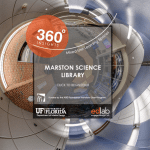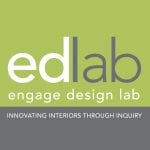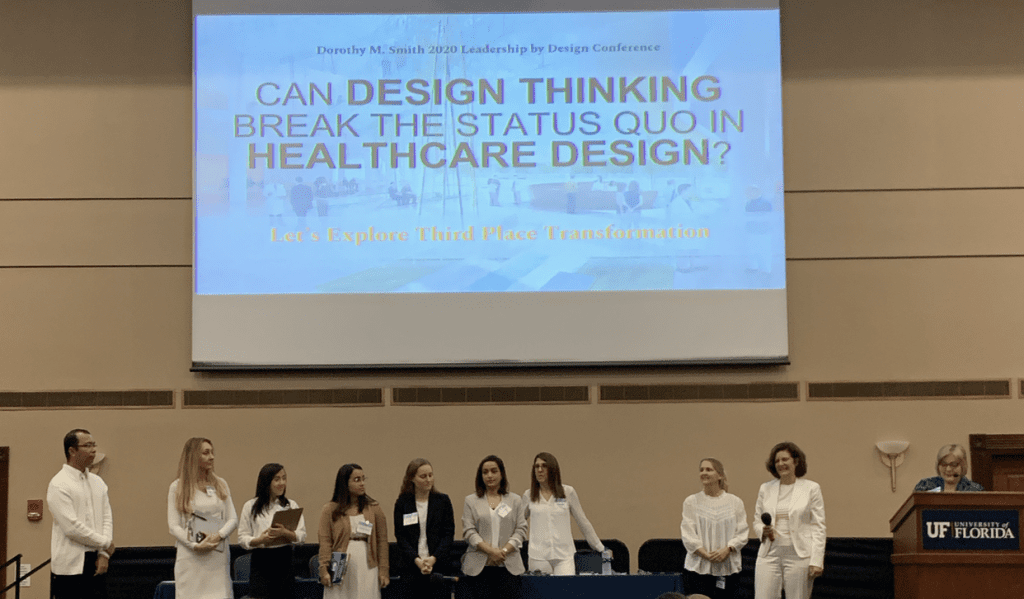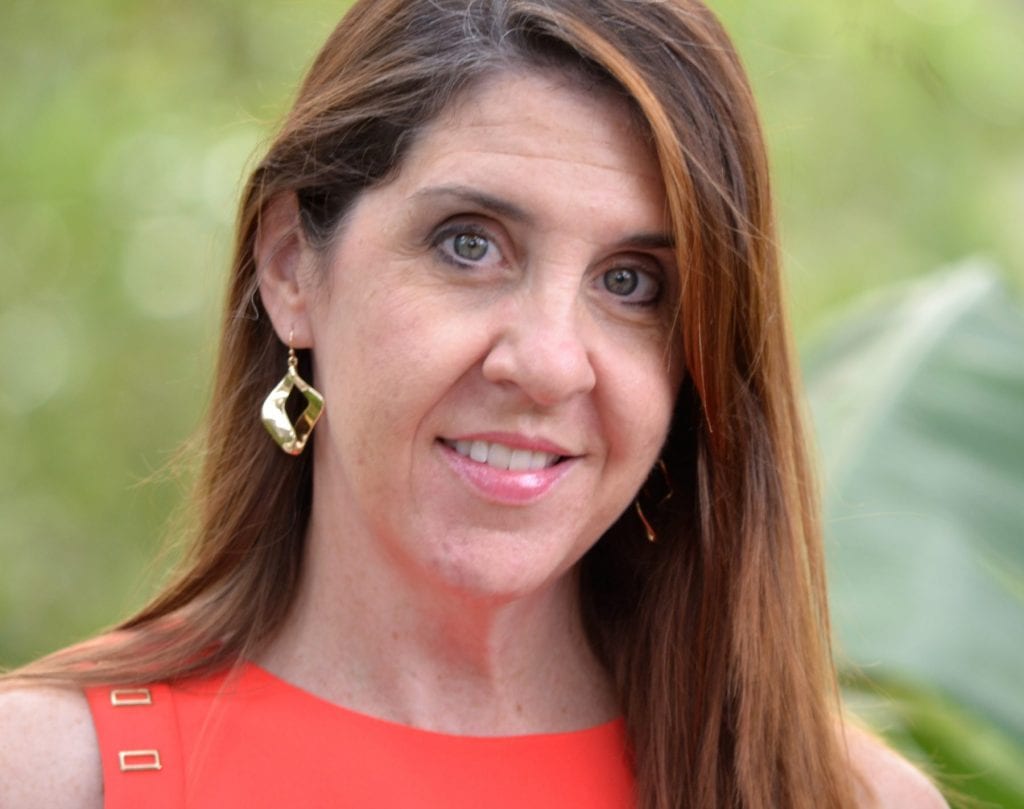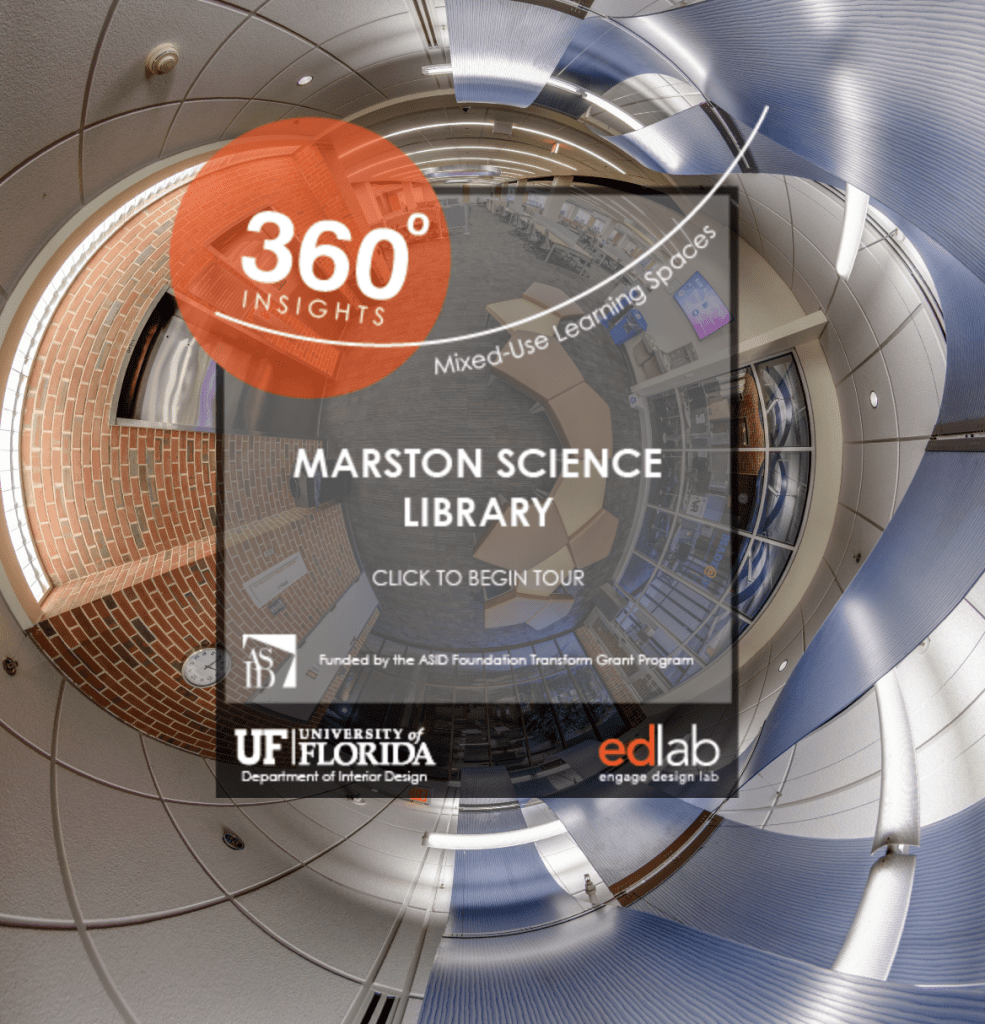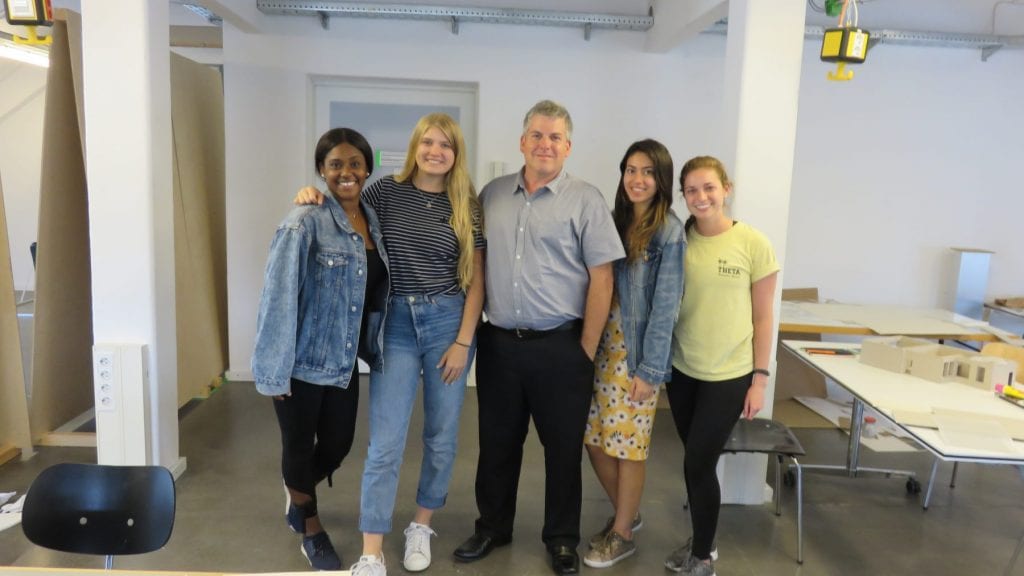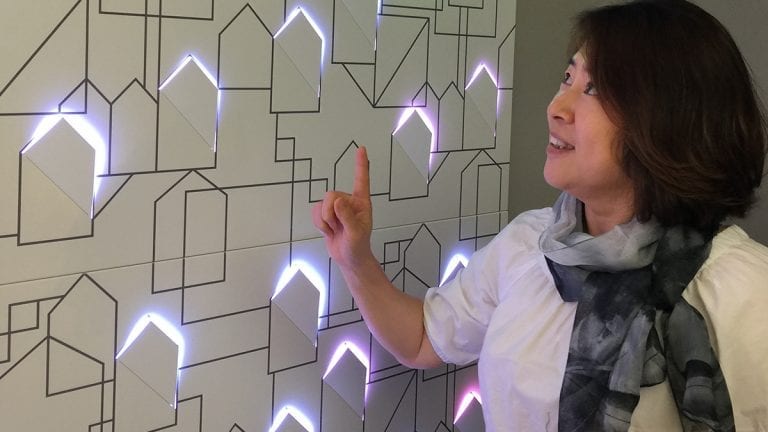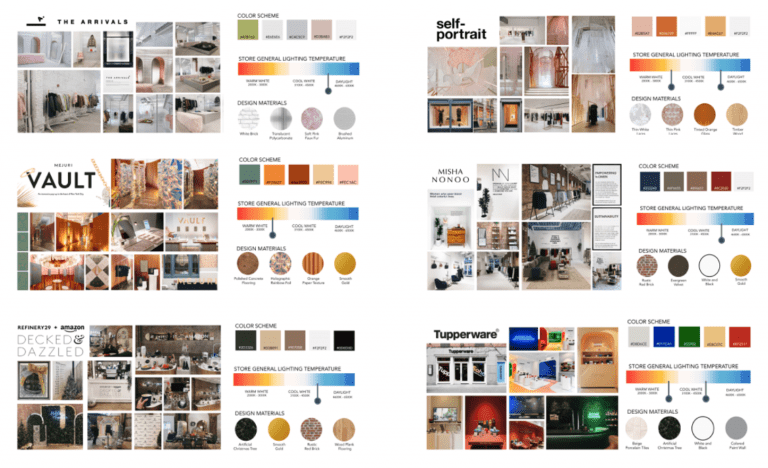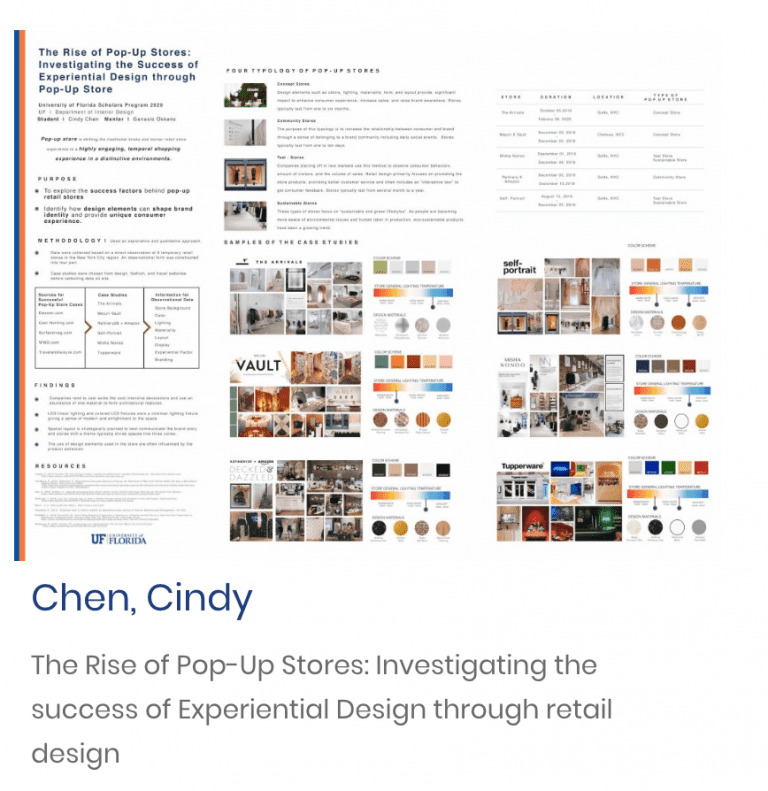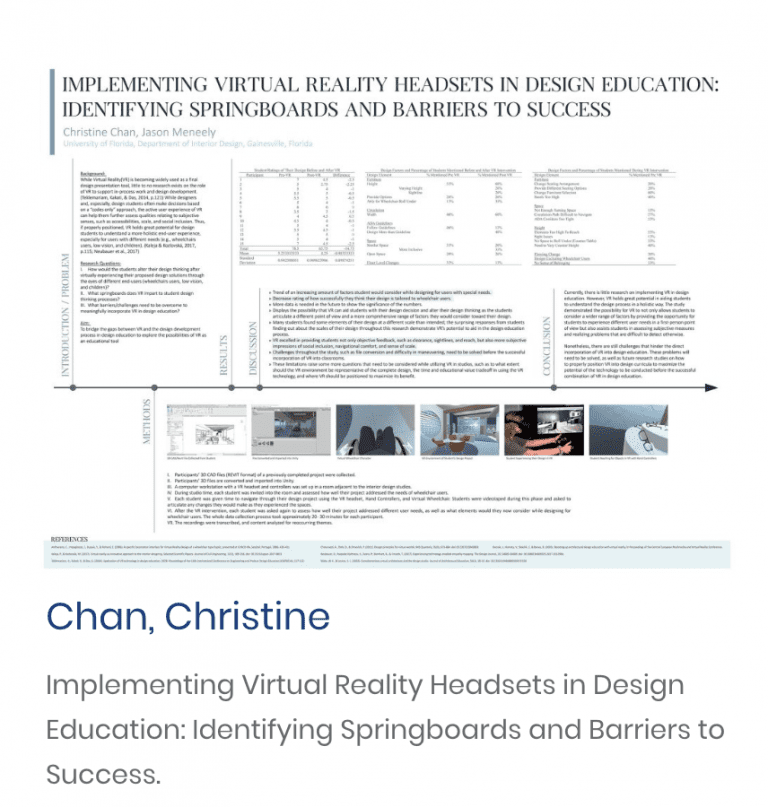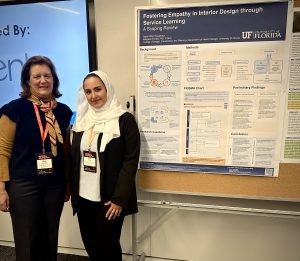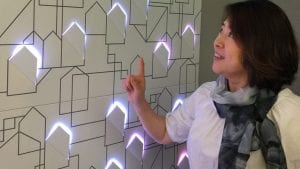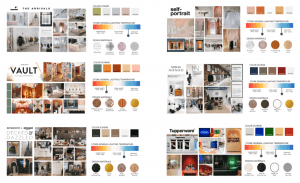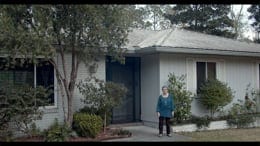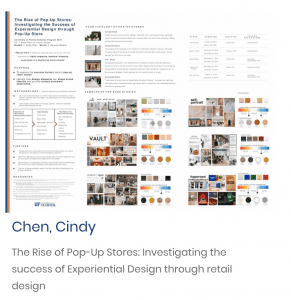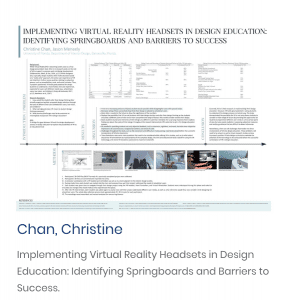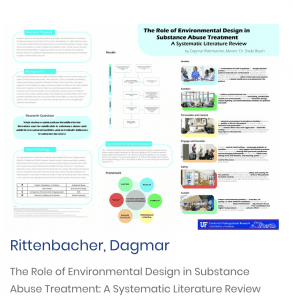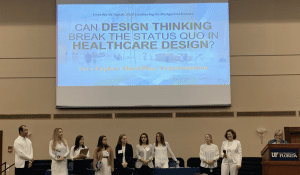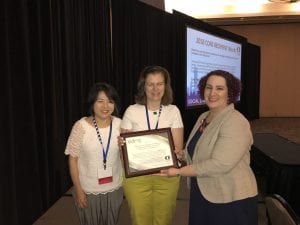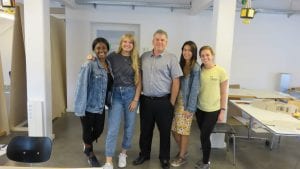Our Evidence-Based Design Research What Sets us Above the Rest
Our faculty engage in research on lighting, technology, healthcare, history and material culture that integrate new insights and knowledge into the undergraduate program. We have a robust graduate program that allows us to expand our faculty with many strong graduate students with practice expertise, expertise in lighting, or in allied fields that enrich the program. A strong commitment to research unifies the faculty and informs the teaching of studios and support classes across the curriculum. Faculty easily reference peer-reviewed research in support classes and studios and train students in pre-design research in three upper division studios. Our research orientation enhances the creative process and informs resulting solutions, and it also helps define the identity of our program.
Engage Design Lab
Our Engage Design Lab works with real clients on and off campus to create solutions.
Marston Science Library 360 tour
Extending the Active Learning Environment: Outside the Classroom and the Spaces In-between
Engage Design Lab. “Inclusive. Innovative. Human-centered design.”
Alone with others: Understanding physical environmental needs of students within an academic library setting
DCP Department of Interior Design And The Agency Win A Competitive $70k Grant From ASID
From Learning Commons To Learning Communities
Faculty Research
Our faculty are engaged in research in color, lighting, virtual reality, technology, hospitality, healthcare, history and materials.
